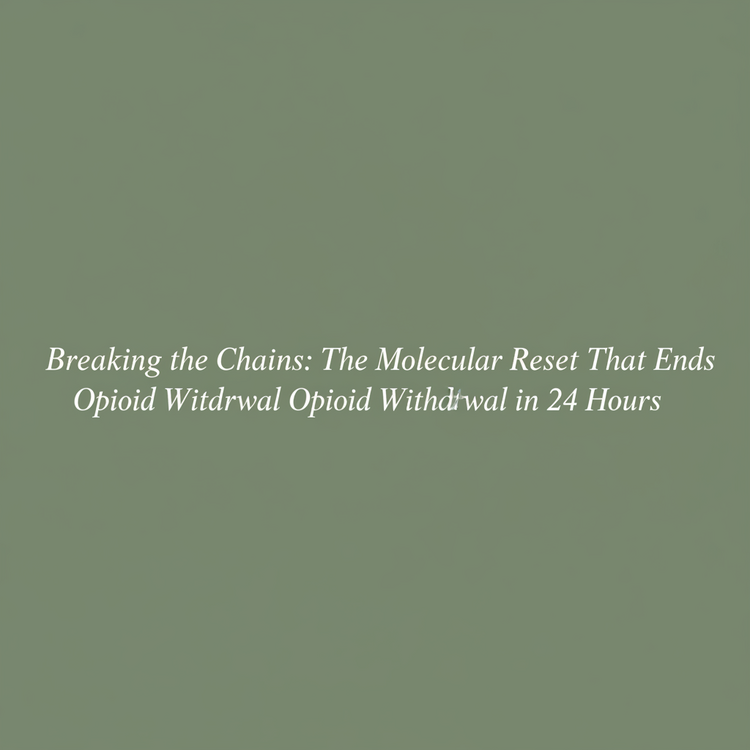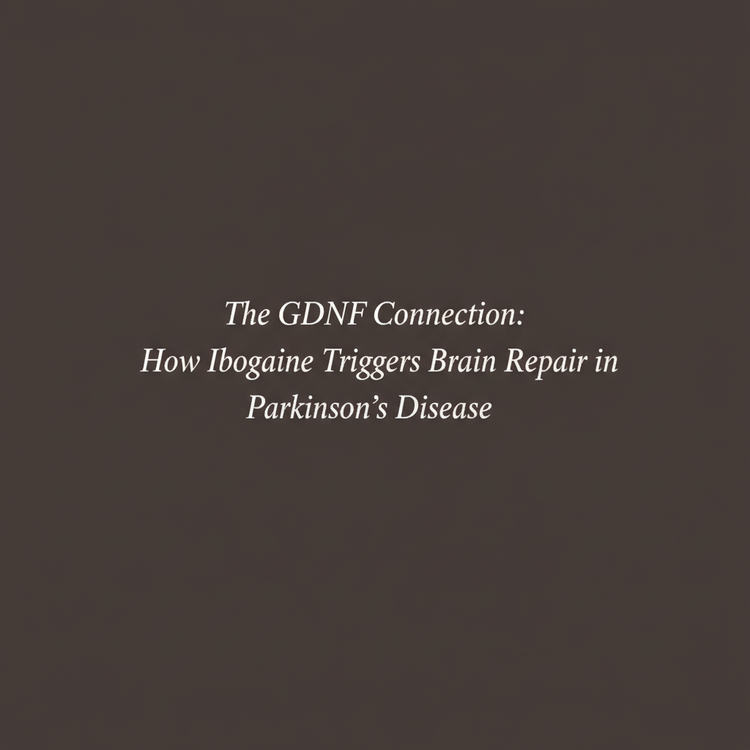Rewiring Trauma: The Neuroscience Behind Ibogaine’s Breakthrough Results for PTSD

Veterans account for just over 6% of the U.S. adult population, yet they represent a staggering 20% of the nation’s suicides. This isn’t just a statistic; it’s a testament to an invisible epidemic of post-traumatic stress (PTSD) and traumatic brain injury (TBI) that conventional treatments often fail to resolve.
For decades, the standard of care—talk therapy and SSRI medications—has provided relief for some, but for many, especially those with complex combat trauma, these tools only scratch the surface. They manage symptoms but rarely reach the root of the wound. But what if there was a way to go deeper, to address trauma at the neurological level where it lives? A landmark Stanford Medicine-led study has provided a powerful answer, revealing that a single ibogaine treatment led to an astounding 88% reduction in PTSD symptoms among Special Operations veterans. This isn’t just another treatment; it’s a paradigm shift in healing what was once considered a life sentence.
Why Traditional Therapy Sometimes Isn’t Enough
Trauma is not just a memory; it’s a physiological state. It rewires the nervous system to exist in a perpetual state of high alert, a survival mode that doesn’t shut off when the threat is gone. This chronic threat response is stored in the body, creating cellular inflammation and keeping the mind locked in loops of hypervigilance, flashbacks, and anxiety.
While talk therapy is essential for cognitive processing, it can struggle to access these deeply embedded physiological imprints. It addresses the story of the trauma but may not be able to calm the nervous system that is still living it. This creates a gap where veterans and other survivors can spend years in therapy, trying multiple medications, yet find no lasting relief from the core symptoms. They’ve done the work, but their brains and bodies remain trapped in the past. To achieve a breakthrough, you need a tool that can bridge that gap—one that fosters profound neuroplasticity and allows the brain to fundamentally rewire itself.
The Stanford Breakthrough: A New Era for Veterans’ Health
The study that captured the attention of the medical world involved 30 U.S. Special Operations Forces veterans, a group often facing the most severe and complex forms of co-occurring TBI and PTSD. In a collaboration between the Stanford Brain Stimulation Lab and VETS, Inc., these veterans were treated with ibogaine co-administered with magnesium, a vital cardioprotective measure.
The results, published in the prestigious journal Nature Medicine, were nothing short of revolutionary. One month after treatment, participants experienced:
- An 88% average reduction in PTSD symptoms
- An 87% average reduction in depression symptoms
- An 81% average reduction in anxiety symptoms
Critically, these weren’t temporary improvements; the benefits were largely sustained at three- and six-month follow-ups. Participants also showed significant gains in cognitive function and a dramatic decrease in suicidal thoughts. This dual healing is what makes the findings so profound. Ibogaine didn’t just address the psychological trauma of PTSD; it appeared to facilitate repair of the underlying neurological damage from TBI, demonstrating a capacity to treat both the physical and emotional wounds of war simultaneously.
The Neuroscience of How Ibogaine Processes Trauma
How does one treatment achieve what years of therapy could not? The answer lies in ibogaine’s unique ability to create a “neurological safe space” for trauma processing. It works on several key brain systems at once.
First, ibogaine helps quiet the Default Mode Network (DMN), the part of the brain responsible for self-referential thought and rumination. In PTSD, the DMN is often overactive, keeping individuals stuck in loops of guilt, shame, and traumatic memories. By reducing this activity, ibogaine provides a temporary break from the rigid patterns of thought that define the traumatic state.
Second, as an NMDA receptor antagonist, ibogaine creates a state of profound neuroplasticity. This allows the brain to become more flexible and receptive to change. During the treatment’s oneirogenic (or “waking dream”) phase, individuals can revisit and re-evaluate traumatic memories from a detached, objective perspective—without the overwhelming fear and emotional charge. This facilitates memory reconsolidation, where the memory is integrated into one’s life story rather than remaining a source of persistent threat.
The ‘Brain Fertilizer’ Effect: Repairing Damaged Circuits
Beyond its psychological effects, ibogaine initiates a powerful biological repair process. Chronic stress and trauma lead to neuronal atrophy—a shrinking of brain cells, particularly in the prefrontal cortex, which governs emotional regulation and executive function. Ibogaine directly counteracts this damage by stimulating the production of two critical proteins: Brain-Derived Neurotrophic Factor (BDNF) and Glial Cell-Derived Neurotrophic Factor (GDNF).
Think of these neurotrophic factors as “fertilizer for the brain.” They promote the survival of existing neurons and encourage the growth of new ones and their connections. This upregulation of GDNF and BDNF is believed to be the key to ibogaine’s success in treating co-morbid TBI and PTSD. It doesn’t just provide a new psychological perspective; it actively helps rebuild the neural hardware that was damaged by trauma. This dual mechanism—psychological reprocessing combined with neurological repair—is what allows for such comprehensive and lasting healing.
From Survival Mode to a Life Reclaimed
The data tells a powerful story, but the human transformations are even more compelling. Veterans who participated in these studies report that flashbacks simply stop. The constant, gnawing hypervigilance that made public spaces unbearable finally calms. Sleep returns, often for the first time in years. The emotional numbness that built a wall between them and their families begins to lift, allowing for genuine connection once again.
Suicidal thoughts, once a constant companion, diminish or disappear entirely. For many, the treatment provides a profound spiritual experience that helps them make sense of their experiences and find a new sense of purpose. This isn’t about erasing the past; it’s about re-contextualizing it so it no longer controls the present. It’s the journey from being broken by trauma to achieving a breakthrough into a life that is not just manageable, but meaningful.
For veterans, first responders, and anyone struggling with the invisible wounds of trauma, a breakthrough is possible. To understand how ibogaine can help you re-establish a sense of safety within your own mind and body, contact Iboga Wellness Institute at 800-604-7294. Our team provides confidential consultations to discuss your history, answer questions about our safety protocols, and determine if this transformative treatment is right for you.
You can also review our Clinical Summary of Ibogaine Therapy for comprehensive information about the mechanisms, protocols, and evidence-based outcomes that are redefining what’s possible in trauma recovery.
Conclusion: A New Paradigm of Healing
The evidence is clear: ibogaine addresses trauma at the neurological and cellular levels that traditional therapies often cannot reach. It represents a paradigm shift from a model of symptom management to one of genuine, facilitated healing. Ibogaine is not a replacement for therapy, but a powerful catalyst that can make subsequent therapy far more effective by creating a brain state receptive to change. For those who have been told their suffering is permanent, for those who have tried everything else, this breakthrough science offers something revolutionary: real, measurable, and lasting hope.
Key Takeaways
- A landmark Stanford-led study found ibogaine produced an 88% average reduction in PTSD symptoms in Special Operations veterans, with benefits sustained for months.
- Ibogaine provides dual healing for co-occurring TBI and PTSD by addressing both the psychological wounds and facilitating neurological repair.
- The treatment works by quieting the brain’s Default Mode Network (DMN) to stop traumatic rumination and promoting neuroplasticity for memory reconsolidation.
- Ibogaine stimulates the production of BDNF and GDNF, neurotrophic factors that act like “brain fertilizer” to repair and grow neural pathways damaged by trauma.







